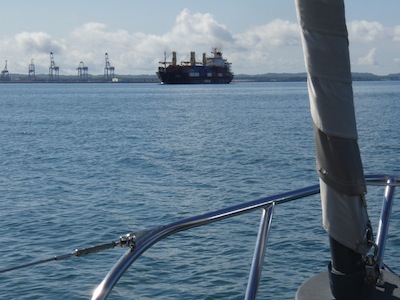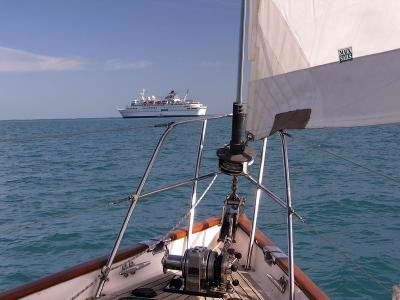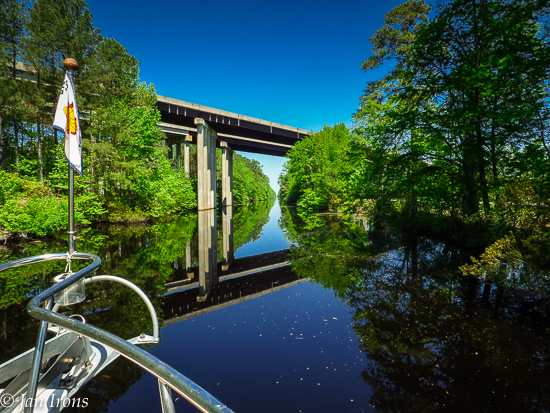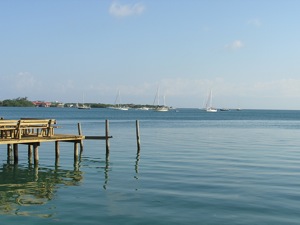From the time a big ship, tanker, cruise ship, cargo ship or whatever, appears on the horizon, you may have only minutes to figure out your avoidance strategy. Big ships move FAST, sometimes up to 30 knots an hour. From the time you first spot a ship on the horizon, it’s only about 4-5 miles out. We can spot them on radar long before we can actually see them – sometimes up to 16 miles out (mostly because our radar is a 16 mile radar!). But if a ship is cruising at 30 and he’s 15 miles out, that’s only a half hour until he’s on top of your boat — and since it may takes big ships literally miles to change course, you must know what’s up far before he gets closer. Just for fun, here’s some more info on the world’s supertankers if anyone is curious: SUPERTANKERS I’m not sure how up to date it is, but it’s a fun summary.
This article on big ship tips was inspired by Tanker Tips from the Ventura Power Squadron article – click here for more…
1. Big ships cannot stop on a dime. In fact, these ships may require as much as 5 miles to stop (with gears in full reverse). The solution is simple: stay out of their way.
2. Big ships will not stop. They may slow down to avoid traffic, however, the slower they travel, the less maneuverable they become.
3. Big ships do not turn very well. For example, a 500 foot, 8000-ton ship needs over a third of a mile to turn around. And, as ships go, a 500 foot ship is the size of a current day US Navy Destroyer, not big and considered highly maneuverable. Also, just as a following sea affects a pleasure boat’s steering, the same holds true of the effect of a following sea on a big ship.
4. Although ships have radar (perhaps more than one), the beam angle comes from so high up (sometimes 100 feet or more) that you may not be seen. Generally speaking, if you are less than 3 miles ahead of a big ship, you are invisible to her radar. The beam has probably gone right over you – your radar signature will likely be too small to notice.
5. There may or may not be anyone on the ship’s bridge. Supposedly every ship has someone on the bridge, but reality is often different. There may or may not be anyone up on the bridge keeping track of the radar and other instruments.
6. Often, foreign crews speak little or no English. This obviously makes radio communication difficult. Furthermore, they rarely respond to recreational boaters and they may not be monitoring Channel 16. Once when we were hailing a ship, I got no answer. But several minutes later, someone called us. The only thing we could figure is that the person on the bridge did not speak English, but after we hailed him, he checked his radar and saw we had a problem. He then woke someone else on the ship who DID speak English and that person called us back!
AIS has improved the situation by allowing recreational boaters to address the ship by name. it doesn’t necessarily mean they’ll answer, but at least you’re using their name rather than “northbound ship off Fowey Rocks Light”.
If it looks like you may have a course problem, it is wise to attempt to hail the ship and let it know you are there and what course change you intend to make. IF you get an answer, you’ll know the big ship knows you are there and may keep a visual on you. Nevertheless, do not assume anything.
7. BIG overrides all the Rules of the Road. Big ships are so much bigger than our boats, they will always win in the event of a collision. In fact, they may not even realize a collision has occurred. Therefore, stay well clear of big ships and always yield the right-of-way, even if you think you should have it.
8. Assume the big ships cannot see you. If you can see the ship’s bridge windows, perhaps the helmsman can see you. If you cannot see the bridge windows, then you might as well be invisible. We’ve been surprised at how many ships could spot us, but we’re not clear if they would have detected us if we hadn’t called on the VHF.
9. It is much easier to see ships at a distance in the dark. During daylight we often don’t see them until much closer. Yet another reason to leave the radar on while close to a shipping channel.
10. If you alter course to avoid converging with a big ship, make your maneuver as big and obvious as possible. Leave no doubt as to your indicated route. Many sailboats seldom achieve 6 knots. If there is any question about whether your course and the big ship’s course are close, you can make a quick 180 degree turn and sail away from her course until you can figure it out. Another tactic is to turn and aim at the ship’s stern. Power-boats move faster, but can use the same rules.
11. Watch out for the big ship’s wake. We tend to see a bow wave and prepare for it. However, there is another wave – her stern wave. Keep in mind that if a big ship is steaming along at 25 knots, her following wake will also be traveling at 25 knots. It isn’t just one wave. Rather, it is a series of equally spaced waves. Sometimes you do not even notice them until the ship is two or three miles passed.
12. Always move through shipping lanes at an angle as close to 90 degrees as possible and as quickly as possible.
16. If you have radar, use it. Big ships show up big – in fact, their radar signature looks similar to that of an oil platform, only they are moving. Even on a clear day when you can see for miles, your radar will tell you how far the ship is from your position. Using bearings, and watching how they change, you can determine how fast the ship is moving and thus, how much time you have to pass or modify your course.
17. Once you can see a big ship on the horizon, expect it to be on top of you in a relatively short period of time. Take action early to avoid a close-crossing situation and be consistent. Once you have made a decision, stick to it. The general rule – when in doubt, don’t – applies.
19. Always pass behind the big ships if in doubt as to whether or not you will make it in front. Do not pass closely.
20. Fishing boats or shrimpers are another challenge as they often move erratically. We’ve had better luck getting them to answer the VHF. It is imperative to know where they’re going and if they have nets in the water trailing the vessel that you cannot see. And just because you figure out their course, do not quit paying attention because they frequently change course! Shining a spotlight on your mainsail will frequently get them to answer the radio.
21. NEVER, NEVER, NEVER place your vessel within 1000 feet of a Navy warship. As a result of the events of 9-11, the Navy is authorized to use lethal force against any vessel coming within the prescribed safety zone without permission.
These “tips” are just that. Always exercise common sense, good judgment and pay attention ALL the time. Take no chances. Be safe!
Do you have more tips for avoiding big ships? Please leave a comment and share. THX! Jan

















Just a nit-pick – the term is “…sometimes up to 30 knots.” The knot is already a unit of distance-per-time, so saying “30 knots per hour” is like saying “30 mph per hour”. Love your blogs, though! Nautically yours, Keith Davie
Thanks Keith! I am definitely NOT a technical type & can use all the help I can get, so feel free to clarify anytime! I just try to relate from my simplistic viewpoint how we accomplish things aboard – in this case avoiding the dang ships that seem to want to harass my night watch!
Great info, all of it spot on, and after living in Fla my whole life, yea, they move quickly. Regarding the fishing vessels, I know the rules state that a sailboat under sail has right of way over a fishing vessel under power, and that a fishing vessel with nets out and or planers down, has right of way over sailboats, but in reality, they don’t care, they think they have right of way over everyone, at all times. When you come up to Tampa from the south, you will see lots of fishing boats out there, many of them way back when, used to go down below for dinner and no one was at the helm, for a long long time. I would bet that with AIS, they wait until their alarm goes off, before returning to the wheelhouse during the night. We were coming up into the Gulf and had one run across our bow, running with no lights except the wheelhouse, thank GOD no nets nor planers either. We ducked him with only a 100 yards to spare. Had we hit, we would have been in the right, but still in the middle of the gulf with a probably sinking boat. So, we honked the air horn and nothing. Ya almost wish someone would have at least poked their head out and given us the finger. It was a calm night with 10/12 knots of breeze, which may have had everyone a little complacent, but, hey, all it takes is one time to die, and you’re dead.
The one thing I had to make sure I have onboard, is my cheat sheet showing what vessels run for running lights at night. I can’t recommend this more highly, after all, wouldn’t you want to know that the sea going tow wasn’t solo, and is towing a barge behind them, two miles away. Wouldn’t want to get caught on that cable, that could really ruin the day. Sail on Garth….
s/v Renasci
Be careful calling those big ships Willy nilly. Often the captain isn’t on the bridge and if someone is, they have no authority to change course anyway. If the captain is sleeping they have to go wake him. Use common sense.